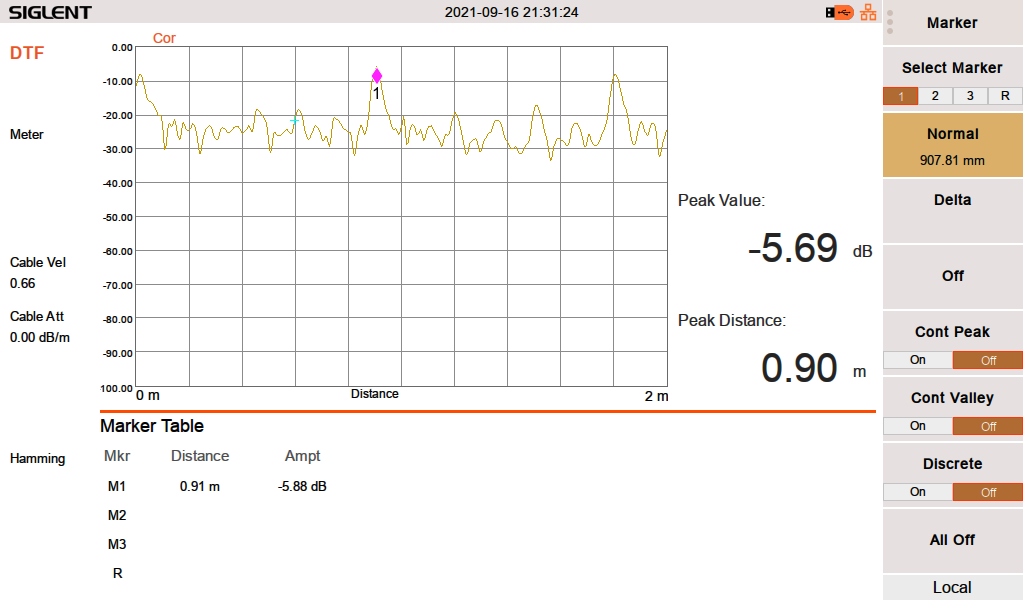What is the Distance-to-Fault (DTF) function measuring?
September 16, 2021
The Distance-to-Fault function (DTF) is an optional feature for the SIGLENT SVA1000X series of spectrum/vector network analyzers and is included free with the SSA3000X-R series of real-time spectrum analyzers.
It is useful for determining the physical location of breaks, dielectric degradation, and other issues in cabling, connectors, and adapters.
This technique utilizes a swept signal source to produce an output signal that covers a known frequency range. As the impedance of the cable/Device-Under-Test (DUT) changes, some of the swept energy is reflected back to the source. This reflected energy is measured and an inverse FFT (IFFT) of the data is used with the propagation velocity of the cable to calculate the physical distance from the source to the impedance difference.
The display shows the reflection coefficient (the ratio of complex amplitude of the reflected vs incident wave) on the X-axis vs. distance from the source:

